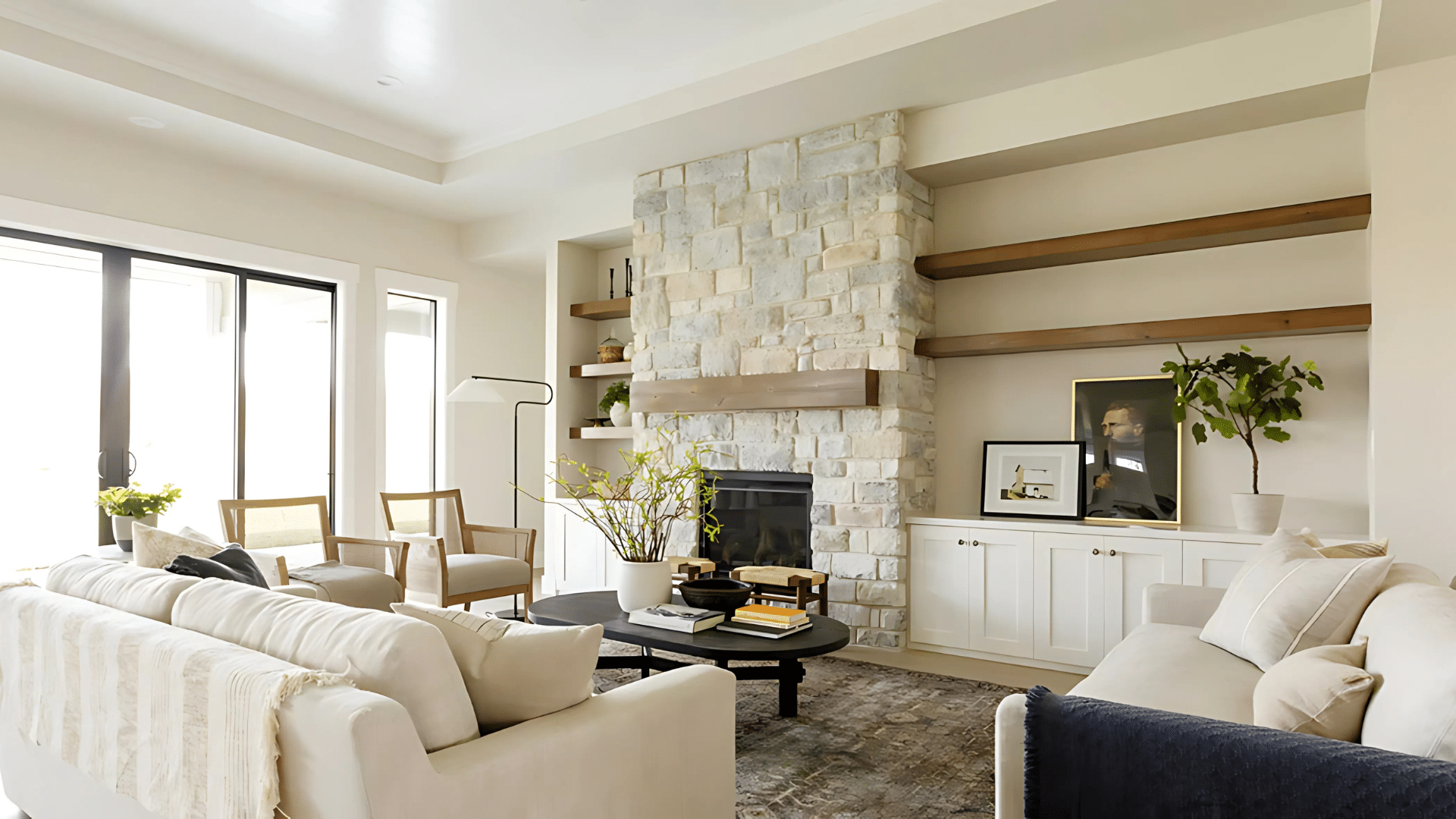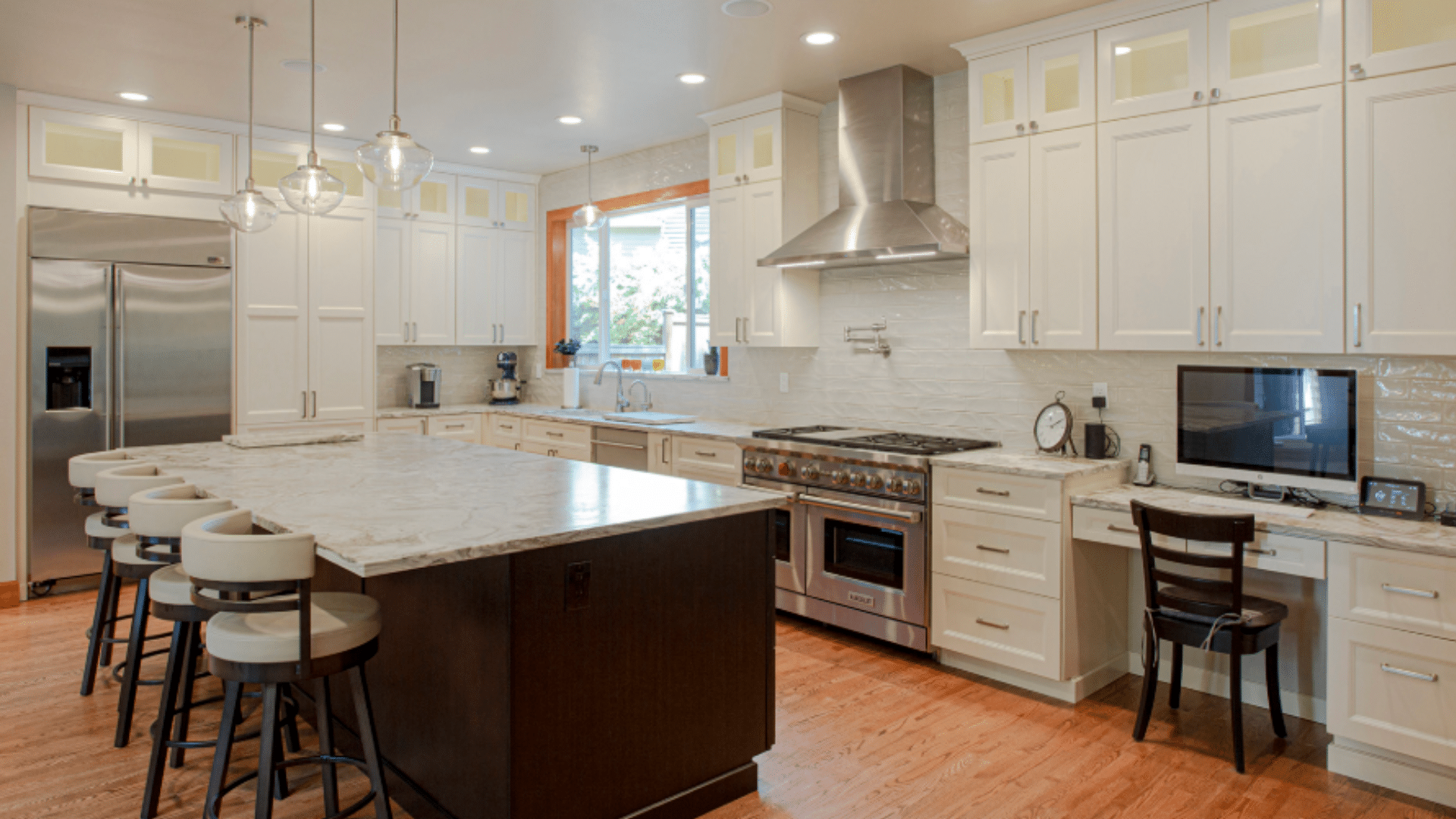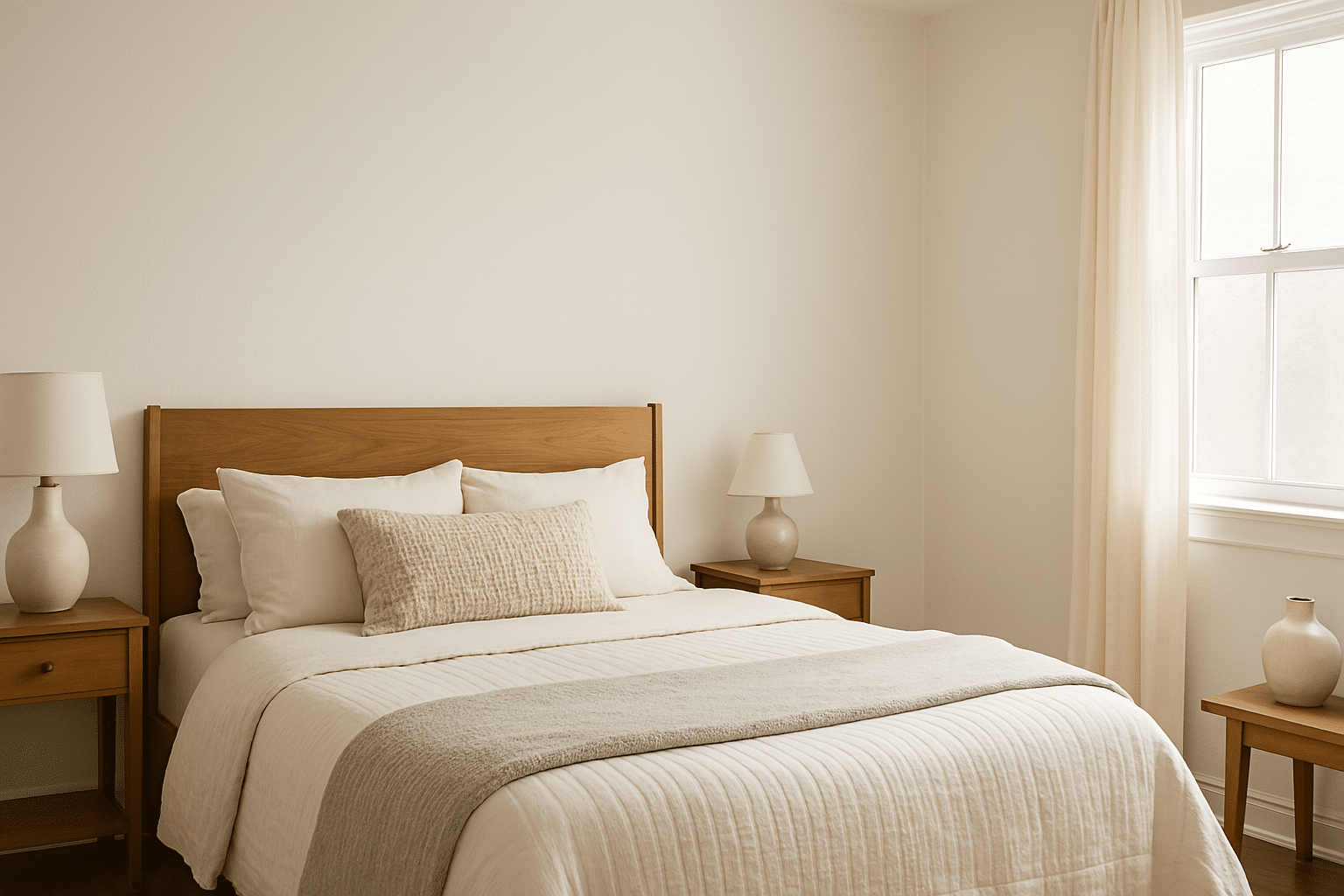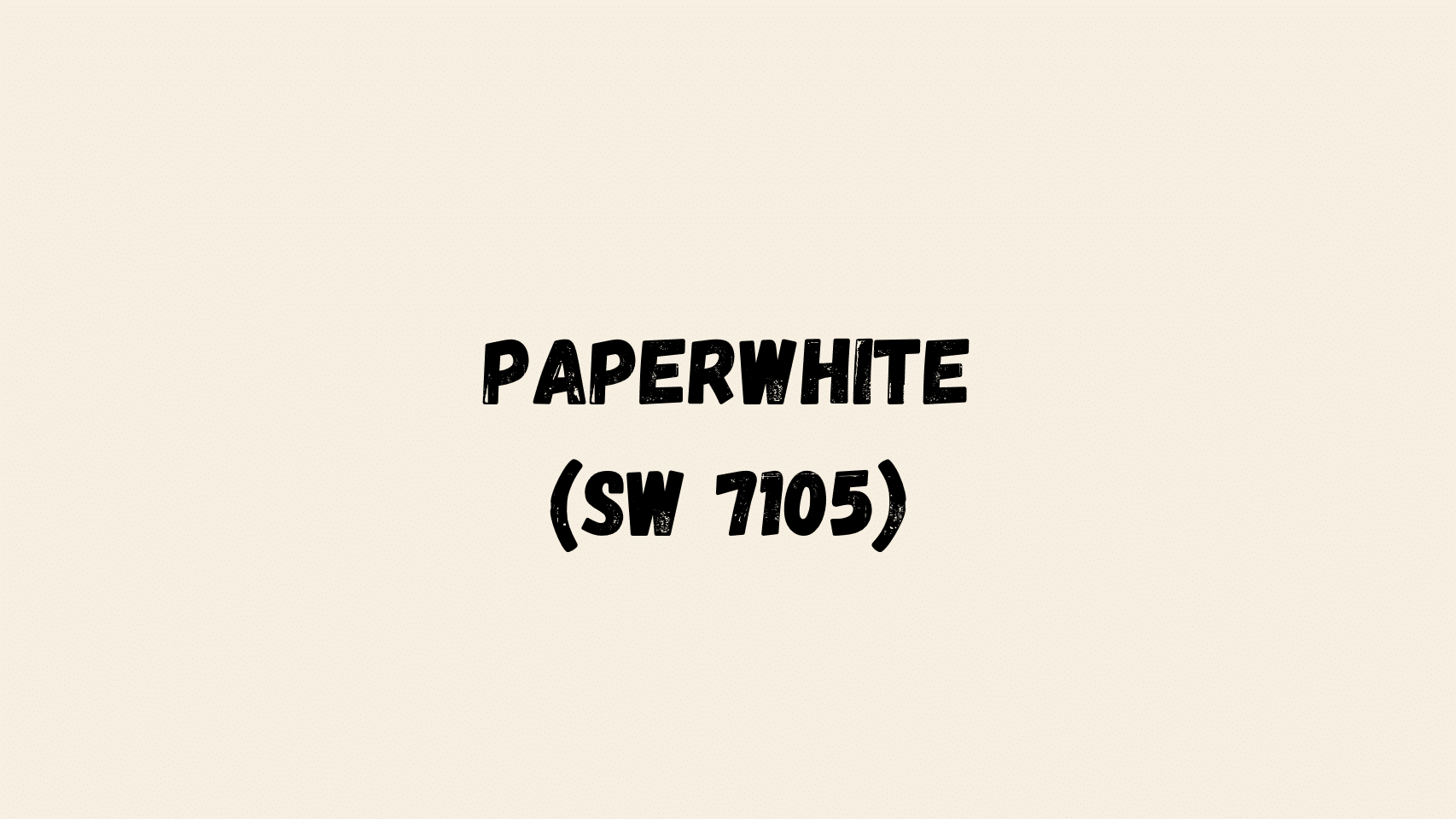Are you stuck with walls that make your home feel small and dark? Most people choose the wrong white paint and end up with rooms that look cold and flat.
Sherwin Williams Paperwhite offers something different – a soft, warm white that works in any room without the harsh brightness of pure white or the yellow tint of cream colors.
With Paperwhite, you can create spaces that feel open, clean, and warm all at once. Your walls will look fresh in any light, from morning sun to evening lamps.
Keep reading to learn why Paperwhite might be your ideal choice, how to use it in different rooms, and tips for pairing it with other colors to create a home that feels both stylish and comfortable.
Paperwhite by Sherwin Williams: A Quick Overview
| Feature | Details |
|---|---|
| Color Code | SW 7105 |
| Color Family | White/Off-White |
| Undertones | Soft gray with slight warm hints |
| Light Reflectance Value (LRV) | 87 |
| Best Uses | Walls, trim, cabinets, furniture |
| Room Suitability | All rooms, especially good in spaces with limited natural light |
| Complementary Colors | Light blues, soft grays, natural wood tones |
| Contrasting Colors | Navy blue, forest green, charcoal gray |
| Finish Options | Flat, matte, eggshell, satin, semi-gloss, gloss |
| Best Lighting For | Works in all lighting but particularly flattering in spaces with warm lighting |
| Mood Created | Calm, clean, welcoming |
| Similar Shades | Benjamin Moore White Dove, Behr Swiss Coffee (but with unique gray undertones) |
Color Characteristics
- Warmth Level: Medium – not too cool, not too warm
- Gray Influence: Subtle but present
- Yellow Influence: Minimal
- Brightness: Soft without being stark
- Neutrality: Very high – works with most color schemes
Why Paperwhite is the Ideal Neutral Shade
Finding the right neutral shade can feel like a challenge. Many whites look too stark, while beiges often appear too yellow. Sherwin Williams Paperwhite strikes a perfect balance that makes it stand out among other neutral options.
Paperwhite contains subtle gray undertones that give it depth without feeling cold. This makes it work well in various lighting conditions – it stays true from morning to evening. Unlike pure whites that can feel harsh, Paperwhite creates a soft, welcoming feel in any room.
This shade pairs well with both warm and cool colors. You can match it with soft blues for a calm space or rich woods for a cozy feel. Its flexibility makes it a top choice for people who want a clean backdrop that won’t clash with other design elements.
Paperwhite works in all rooms – from kitchens to bedrooms. It creates a sense of space without the glare of brighter whites, making it useful for small rooms that need to feel bigger and more open.
How to Incorporate Paperwhite Into Different Rooms
Sherwin Williams Paperwhite is a versatile and neutral shade that works well in a variety of room settings. Here’s how you can incorporate this soft, elegant color into different spaces:
1. Living Room: Creating a Light, Airy Atmosphere

Paperwhite works wonders in living rooms by making them feel more open. Paint all walls with this shade to form a clean canvas for your furniture and art. The soft white tone helps bounce light around the room, which makes the space feel bigger and brighter without being too stark.
Add depth by using Paperwhite on walls while painting trim in a brighter white. This subtle contrast adds interest without breaking the flow. For a cohesive look, pair with light gray or tan furniture that complements the warm undertones in the paint.
2. Kitchen: Enhancing Natural Light and Pairing with Bold Colors

In kitchens, Paperwhite helps make the room feel clean and fresh. It works well on cabinets, walls, or both. When used on cabinets, it creates a timeless look that won’t go out of style next year.
This shade makes small kitchens feel more open and helps bring out the best in natural light. For a modern look, pair Paperwhite walls with darker cabinets or a bold backsplash. The neutral base lets you add pops of color through small items like bowls, plants, or tea towels.
3. Bedroom: Bringing Tranquility and Serenity

Bedrooms need to feel calm and restful. Paperwhite creates this mood without the coldness that comes with pure white. Paint all four walls or use it as an accent on one wall for a subtle focal point.
For a soft, layered look, pair Paperwhite walls with bedding in similar tones but with different textures. Add wood tones through furniture to bring warmth to the space. The result is a room that feels both clean and cozy at the same time.
Perfect Pairings: Colors That Complement Paperwhite’s Charm
Sherwin Williams Paperwhite’s versatility makes it a perfect match for a wide range of colors, whether you prefer bold, dramatic hues or soft, muted tones. Here are some of the best pairings to enhance the charm of Paperwhite:
Chopsticks (SW 7575)

Chopsticks (SW 7575) makes a great partner for Paperwhite. This warm brown tone adds depth to any room without feeling heavy. The earthy quality of Chopsticks brings out the slight gray hints in Paperwhite, making both colors look better together.
Use Chopsticks for accent walls in rooms painted in Paperwhite. This combo works well in living rooms where you want a cozy feel without dark colors. Try Paperwhite on most walls and Chopsticks on one wall to create a focal point.
For furniture, Chopsticks-colored wood pieces stand out nicely against Paperwhite walls. This mix gives you a clean base with warm touches that make a space feel lived-in and welcoming, not cold or plain.
Caramelized (SW 9186)

Caramelized (SW 9186) offers a rich, warm tone that pairs well with Paperwhite’s clean look. This warm tan color adds warmth to spaces that might feel too stark with white alone.
In kitchens, try Paperwhite on walls with Caramelized cabinets. This mix feels fresh yet warm. The contrast is soft enough to feel calm but clear enough to add visual interest.
For bedrooms, Paperwhite walls with Caramelized accents through bedding or furniture create a restful space. The warm-cool balance helps a room feel both clean and cozy at once.
This color pair also works well in open floor plans, where you can use Paperwhite as the main color and Caramelized to mark different areas or add accent pieces that tie the space together.
The Best Features of Sherwin Williams Paperwhite
Sherwin Williams Paperwhite stands out as an exceptional neutral paint choice due to its unique qualities:
- Works in all lighting conditions without shifting to yellow or blue
- Creates a sense of space in small rooms
- Offers warmth without the yellow tint found in many neutral shades
- Pairs well with both cool and warm color schemes
- Makes a room feel bright without the harsh glare of pure white
- Hides minor wall flaws better than brighter whites
- Serves as an ideal backdrop for artwork and furniture
- Provides a timeless look that won’t quickly go out of style
- Helps rooms appear clean and fresh without feeling cold
- Shows less dirt and marks than pure whites
- Creates a good balance between modern and classic styles
Tips for Painting with Paperwhite
Achieving a flawless finish with Sherwin Williams Paperwhite requires attention to detail and a bit of planning. Here are some tips to help ensure your painting project is a success:
1. Prep Work: Ensuring a smooth finish
Clean your walls first to remove dust and dirt. Fill holes and sand rough spots before you start. Use a good primer, which helps the paint stick better and gives more even color. This step matters most when covering dark walls or stains.
2. Layering: Getting the best result with multiple coats
Apply two thin coats instead of one thick layer. Let each coat dry fully before adding the next one. This method stops streaks and gives a smooth look. Use even strokes and check for missed spots in good light between coats.
3. Maintenance: Keeping it clean and looking fresh
Keep walls clean with gentle soap and soft cloths. Avoid harsh cleaners that can dull the paint. Save some paint for touch-ups on marks or scuffs. Dust walls often with a soft brush to keep them looking fresh and bright.
4. Use Quality Tools
Good brushes and rollers make a big difference. Foam rollers work well for flat walls. Use smaller brushes for edges and trim. The right tools help avoid brush marks and give a smooth finish that looks better and lasts longer.
5. Check the Lighting
Test Paperwhite in the room’s actual light before painting all walls. Morning light may make it look different than evening light. The soft gray tones in Paperwhite can shift based on your light sources, so testing helps ensure you’ll be happy with the final look.
Conclusion
Paperwhite stands out as a reliable neutral shade that works in many homes. Its soft gray undertones create walls that feel fresh without being too cold or stark.
This paint helps rooms feel bigger and brighter while hiding small wall flaws that other whites might show. From living rooms to bathrooms, it fits well in any space.
The key to success with Paperwhite lies in good preparation and proper application. With the right tools and technique, you can create a finish that stays beautiful for years.
If you’re looking for a white that won’t feel too clinical or yellow, Paperwhite offers the balance many homeowners want. It creates a clean, timeless look that works with many styles and color schemes.
Frequently Asked Questions
1. What is Sherwin-William’s Most Popular Interior White?
Based on current information, Sherwin-Williams’ most popular interior white paint color is “Pure White” (SW 7005), which offers a clean, neutral white without appearing too stark or clinical.
2. What Shade is Clove?
Clove is a warm, rich brown color with reddish undertones, similar to the dried spice. It’s a deep, earthy shade often used in interior design and fashion.


